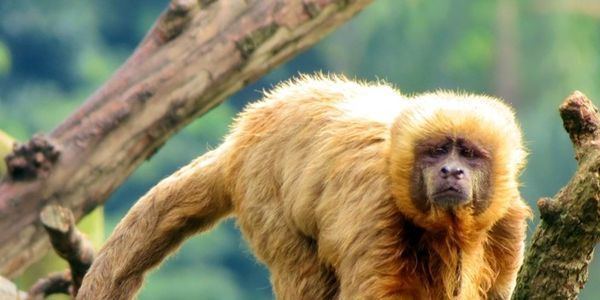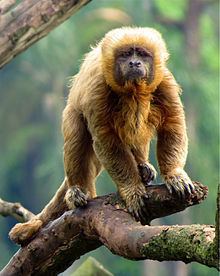Genus Sapajus | Phylum Chordata Scientific name Sapajus flavius Rank Species | |
 | ||
Similar Robust capuchin monkey, Primate, Kaapori capuchin, Golden‑bellied capuchin, Black‑striped capuchin | ||
The blond capuchin (Sapajus flavius) is a species of the capuchin monkeys group, the genus Sapajus. This critically endangered species was rediscovered in 2006. It is endemic to northeastern Brazil, and it is estimated that only about 180 individuals remain.
Contents

Classification

The blond capuchin was first described as "caitaia" by Georg Marcgrave in 1648. In 1774 Johann Christian Daniel von Schreber posited Simia flavia as an independent species, but it had long lacked any specimen. It was not until in 2006 when researchers made its neotype designation. In their neotype designation article, de Oliveira and Langguth confirmed the consistency of Marcgrave’s, Schreber’s, and their capuchins, attributed the authority to Schreber, and established a new combination of its scientific name, C. flavius Schreber, 1774.

In the same year, 2006, Mendes Pontes and Malta reported C. queirozi as a new species. However, de Oliveira and his collaborators pointed out the existence of the previous studies, that is, those of Marcgrave and Schreber as well as the inadequacy of Mendes Pontes and Malta's designation of the type specimen, and therefore considered C. queirozi to be a junior synonym. Rylands and Mittermeier followed de Oliveira and Langguth’s view.

In 2011, Jessica Lynch Alfaro et al. proposed that the robust capuchins such (formerly the C. apella group) be placed in a separate genus, Sapajus, from the gracile capuchins (formerly the C. capucinus group) which retain the Cebus genus.
Description
Pelage uniformly golden; whitish cap on the head; face pinkish; palms of the hands and feet black. Head and body ca 35–40 cm; tail nearly equivalent. Weight ca 2–3 kg.
Distribution
This species inhabits the northeastern Atlantic Forest extended in the states of Paraíba, Pernambuco, and Alagoas in the northeastern part of Brazil. The blond capuchin was rediscovered in two Atlantic Forest fragments in Paraíba, the Camaratuba Experimental Station and the Engenho Gargaú Private Natural Heritage Reserve. Sample animals were captured and examined. In the Gargaú reserve they seemed healthy and were probably a viable population for the next 100 years. The Camaratuba population had a 50% risk of extinction. They have also been seen in the Pau-Brasil Ecological Station in Paraíba, just south of the Camaratuba station.
